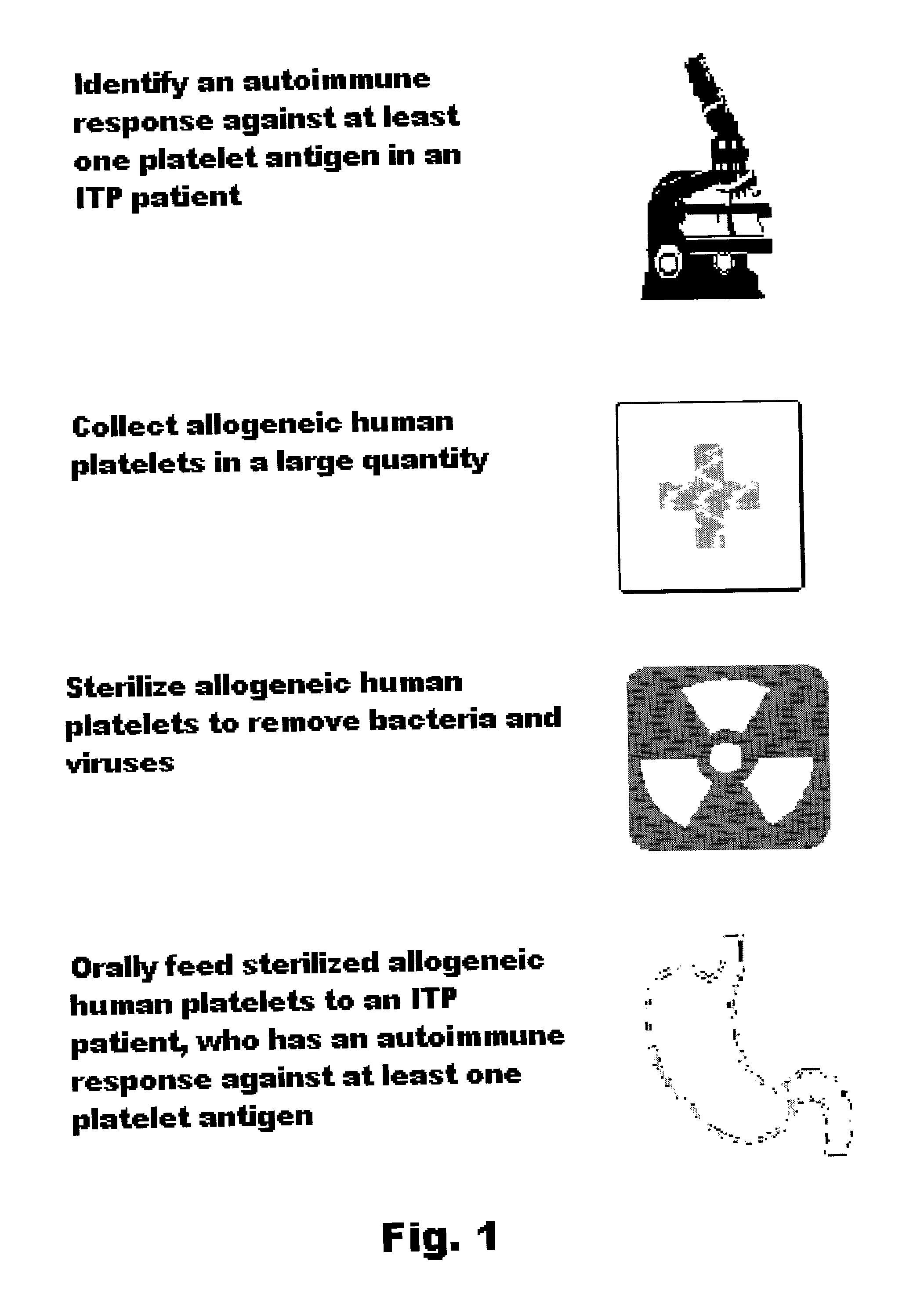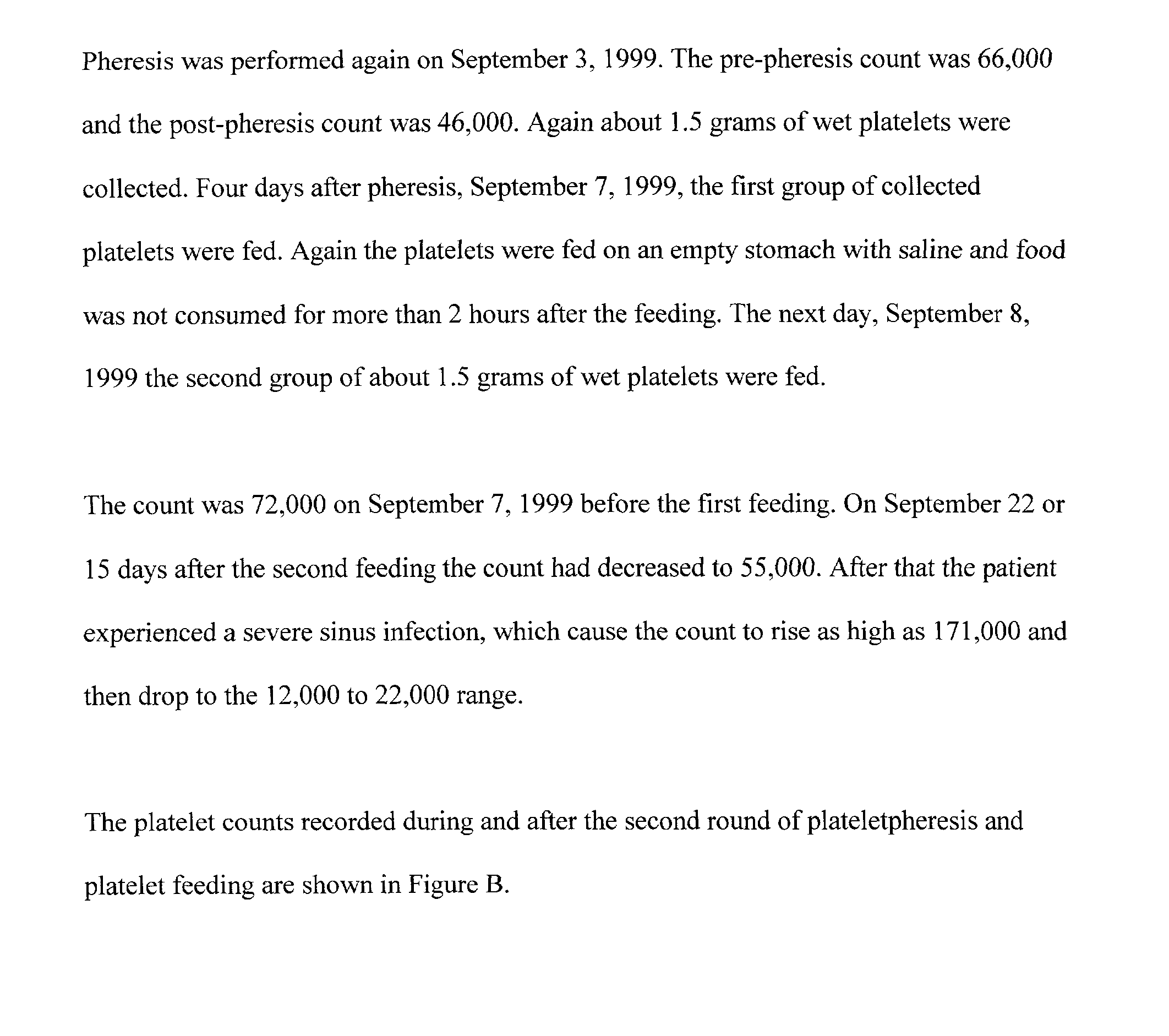Oral tolerance using allogeneic platelets in ITP
a technology of allogeneic platelets and oral tolerance, which is applied in the field of oral tolerance using allogeneic platelets in itp, can solve the problems of lack of focus, lack of research and research monies, and the lack of attention given to autoimmune diseases
- Summary
- Abstract
- Description
- Claims
- Application Information
AI Technical Summary
Problems solved by technology
Method used
Image
Examples
Embodiment Construction
[0026] ITP
[0027] Freedman et al. (25) have described the history of ITP from the first record of symptoms in the 5.sup.th century, to research over the last 10 to 15 years. They report that the discoveries made in 1951 were of particular importance. In this year, they note that ITP was induced through plasma transfusion (26), the mechanism of transfer was identified as an anti-platelet antibody (27) and corticosteroids were first used as a treatment (28).
[0028] In other words, it was discovered in 1951 that ITP is an autoimmune disease. As a result, idiopathic thrombocytopenic purpura has become synonymous with immune (or immune mediated) thrombocytopenic purpura.
[0029] Essentially, the discoveries in 1951 laid the groundwork for our current knowledge of ITP. This knowledge is that ITP is the result of B-cell produced auto-antibodies which are directed against glycoproteins on the platelet cell wall.
[0030] Freedman et al. (25) reported another discovery in 1951 that should be noted ...
PUM
 Login to View More
Login to View More Abstract
Description
Claims
Application Information
 Login to View More
Login to View More - R&D
- Intellectual Property
- Life Sciences
- Materials
- Tech Scout
- Unparalleled Data Quality
- Higher Quality Content
- 60% Fewer Hallucinations
Browse by: Latest US Patents, China's latest patents, Technical Efficacy Thesaurus, Application Domain, Technology Topic, Popular Technical Reports.
© 2025 PatSnap. All rights reserved.Legal|Privacy policy|Modern Slavery Act Transparency Statement|Sitemap|About US| Contact US: help@patsnap.com



